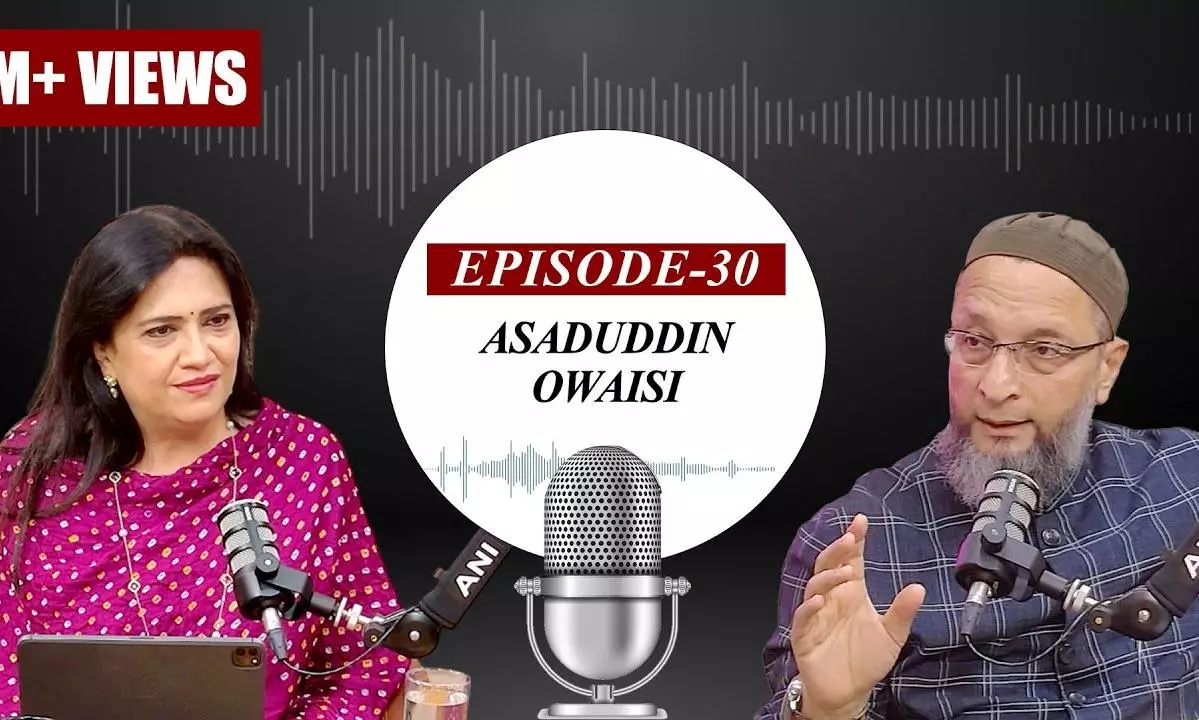
The way media shapes public perception with saffron ideology
text_fieldsThe mainstream media in India has been known for shaping narratives and creating public opinion in tune with right-wing agendas, particularly targeting the Muslim community. Being pawns in the hands of the saffron party, the Muslim community has been made a drum whenever the saffron government comes under criticism. The Muslim issue is thrown at the public, whereupon the public is called to beat on it, strategically deflecting attention to the issue, which is presented as the biggest threat to the country.
As the Lok Sabha elections are underway, having completed the fourth phase, Muslim issues are always at the centre stage, or the media conspicuously bring the issue to the centre so that other critical issues are hidden from the public to save the incumbent saffron government. This is apart from the hate being spread even from the tongue of Prime Minister Narendra Modi, as there is little to project as his achievement for the country during his ten-year tenure.
A report in The Wire, however, shed light on how these so-called media, often called Godi media for being the mouthpiece of the saffron government, shape the narrative and put it in the mouths of people who are in opposition to the ruling BJP. The report brought forth a recent interview of All India Majlis-e-Ittehadul Muslimeen (AIMIM) MP Asaduddin Owaisi by Smita Prakash on the ANI podcast, examining how questions are crafted to bolster right-wing agendas.
Questioning the reports of hate speech targeting the Muslim community, Smita urged Owaisi to clarify whether the state of Muslims in India was akin to the plight of Jews in 1930s Germany, as he had suggested earlier, to downplay the implication of hate speech while pointing out that Muslims are not being put in gas chambers. It is implicit by the question itself that her intention was to prove Owaisi’s argument was wrong as well as exaggerated.
However, it is as though he has sensed the danger of the question, putting him on the defensive to justify his argument while simultaneously derailing him from the core issue of hate speech. Owaisi tried to clarify that it was the hate speech targeting the Jews and the cult-building that preceded genocide. He connected the increased hate speech against the Muslim community to the impending danger, likening it to a potential Holocaust in India.
However, Smita continued to deflect the discussion by creating a false equivalence between current hate speech and extreme historical events, suggesting that unless situations escalate to the level of gas chambers, the concerns are unfounded.
This tactic, known as shifting the goalposts, is used to control the narrative and deflect valid criticism. Smita further exacerbated this by introducing unrelated comparisons, such as questioning whether Modi is focusing on building toilets or gas chambers, thus diverting the discussion from the real issue of hate speech.
Despite these tactics, Owaisi remained focused on his argument that the Prime Minister’s language toward Muslims mirrors that of historical hate speech, leading to potentially dangerous outcomes. He cited instances where Muslims were referred to as intruders and threats to Hindu women’s safety, questioning why such divisive rhetoric was being used in political discourse.
Smita’s defence of Modi's statements by suggesting they were simplified for rural voters, highlights a deeper issue within media coverage. The justification of hate speech as a tool to simplify complex problems is problematic, and the platforming of such rhetoric underlines the bias inherent in certain media structures. This approach not only legitimizes harmful speech but also perpetuates a narrative that aligns with right-wing ideologies.
As the interview progressed, Smita continued to employ deflection tactics, such as arguing that since other poor communities like the Dalits were not complaining, Muslims should not either. This comparison fails to address the specific grievances and historical context of each group, instead using a simplistic argument to dismiss legitimate concerns.
Owaisi’s persistence in addressing the hate speech issue was met with further deflection when Smita asked whether he genuinely believed Modi’s language was akin to Hitler's and who he thought could be an alternative leader. This question, combined with a taunting remark about the potential branding of Muslims, showed a troubling lack of sensitivity and understanding of the gravity of the issue.
The exchange underscores how media can create a permission structure that allows certain leaders to evade scrutiny. By questioning the validity of victims' concerns and employing rhetorical exaggeration, journalists can inadvertently - or deliberately - desensitize the public to the humanity of marginalized groups. This approach not only shields leaders from accountability but also normalizes the dehumanization of minorities.
The interview with Owaisi is a stark reminder of the critical role media plays in shaping public discourse. As hate speech and divisive rhetoric become more prevalent, the responsibility of journalists to maintain ethical standards and provide balanced coverage becomes even more crucial. The conversation between Smita and Owaisi serves as a case study of how media can be used to either challenge or reinforce harmful narratives.











